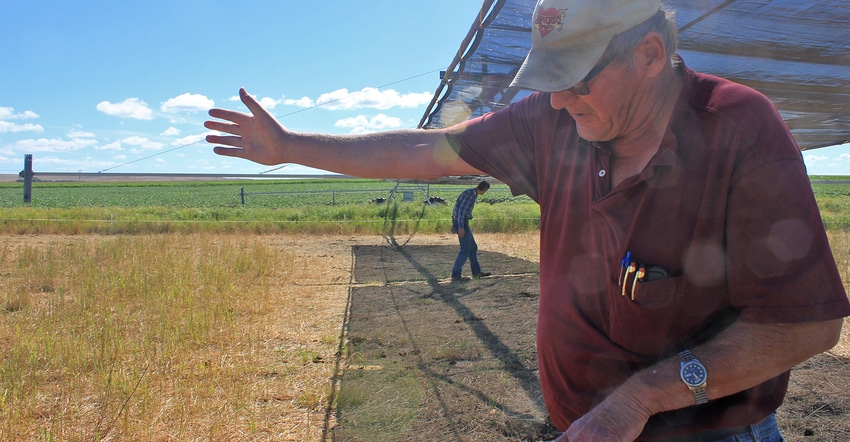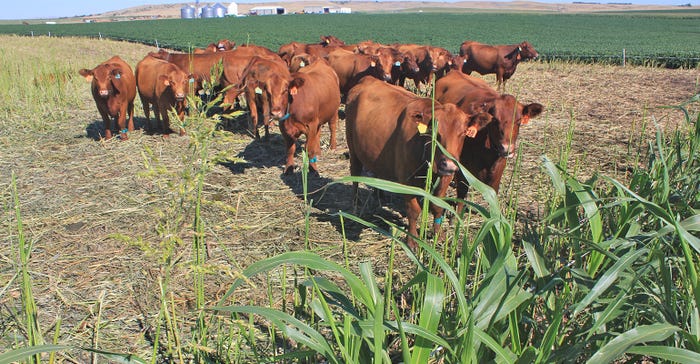September 6, 2017

By Lance Nixon
Call them professor Dwayne Beck’s research assistants — 30 2-year-old, bred heifers, busily feeding on forage crops in a field at the Dakota Lakes Research Farm that Beck manages.
Beck, named to the South Dakota Hall of Fame in 2007, is famous in the Plains states as a forward-looking innovator who has helped perfect the means for farmers to get along without the tillage that costs them money and moisture.
But one of the no-till pioneer’s current projects is actually a long look backward to the diversified farm operations of an earlier era that included livestock. Specialized crop-farming operations that kicked the animals off the place have lost some key benefits, including access to livestock markets when crop prices are down, says Beck. Those farms also are paying more for fertilizer because they’re not running some crops through their own livestock and using the manure.
“All the people here used to have livestock,” Beck said on a recent day at the Pierre farm. “They did in the Corn Belt, too. They were your crop insurance. Now we’ve created a farm bill system that favors grain. It is easier if you don’t have livestock.”
But what is easy is not necessarily as good for the land, Beck said. By no longer having large ruminants such as cattle graze an area the way bison once swept through, humans have interrupted an ancient cycle that returned nutrients to the very soil that produced them. Feedlots and concentrated animal feeding operations, too, interrupt the cycle because the nutrients in feedlot animal waste often don’t make it back to the fields that produced the feedstuffs. And although Beck has no problem with shipping ethanol out of producer states, he’s concerned that shipping out distillers grain — the ethanol coproduct — is, in effect, exporting nutrients.
This is the third year running Beck has used animals, but it is the first time Dakota Lakes has owned them — some red Angus and some red Angus-Simmental cross. The immediate goal is to monitor the heifers through calving.
 CASH COWS: Cows on the Dakota Lakes Research Farm graze a cover crop. They represent a return to a natural cycle on the farm that should lower costs, improve soil health and increase yields.
CASH COWS: Cows on the Dakota Lakes Research Farm graze a cover crop. They represent a return to a natural cycle on the farm that should lower costs, improve soil health and increase yields.

Working with Cody Zilverberg, an adjunct assistant professor in the Department of Natural Resource Management for South Dakota State University, Beck said the goal is ultimately to “field-finish” animals — Beck’s term.
“We’re looking backward to natural cycles,” Beck said.
Beck and Zilverberg are trying to invent “self-propelled grazing cells” — another of Beck’s terms — that can move over the land. They’re also exploring what some researchers and industry people call “virtual grazing cells” or “virtual shepherds” that will control animal grazing with collars.
Much of the funding for the livestock research is coming from a $1 million grant Dakota Lakes Research Farm received in late 2014 from the Howard G. Buffett Foundation of Decatur, Ill.
Nixon is a writer who currently splits his time between Pierre, S.D., and Pinedale, Wyo.
You May Also Like




